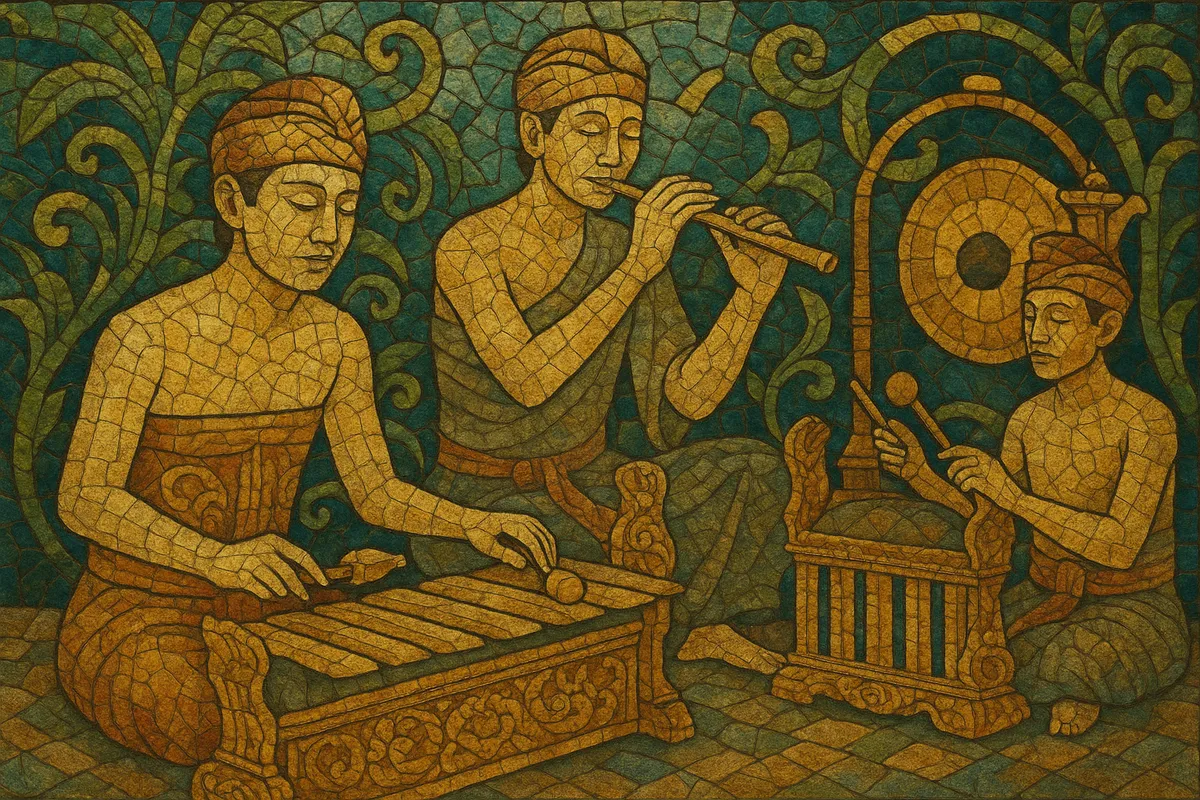Gamelan Semar Pegulingan is a refined Balinese court gamelan style known for its sweet, flowing melodies, delicate textures, and moderate tempos. The name “semar pegulingan” is often glossed as music for the royal sleeping quarters, reflecting its intimate, elegant function in palace life.
The ensemble typically uses a seven-tone pelog (saih pitu) tuning system, from which five-tone modes (patutan) are selected for specific pieces. The sound is led by the trompong (kettle-gong melody leader) and supported by suling (bamboo flutes), metallophones of varying registers, drums, small timekeeping gongs, and the large colotomic gongs that articulate formal cycles. It is largely instrumental and often accompanies graceful court dances such as legong.
Semar Pegulingan emerged in Bali’s royal courts during the post-Majapahit period, most strongly associated with the Gelgel–Klungkung courts. Its aesthetics reflect a refined courtly taste: poised tempos, subtle ornamentation, and mellifluous melodic lines designed for intimate palace settings.
Building on older Balinese court ensembles, Semar Pegulingan consolidated a seven-tone pelog (saih pitu) framework. Performers select particular five-tone patutan (modes) from the seven pitches to craft distinct colors for each composition. The trompong assumed the leading melodic role, while suling, metallophones, drums, and gongs provided layers and colotomic punctuation.
Semar Pegulingan coexisted with and shared repertoire concepts with other court/temple ensembles such as Gamelan Gong Gede. Its repertoire and modal practice strongly informed pelegongan (music for legong dance) and, indirectly, modern Balinese idioms. In the 20th century revival and documentation by Balinese maestros and arts institutes helped preserve Semar Pegulingan alongside the rise of newer, more extroverted styles.
Although its original courtly context diminished, village sekaa (community ensembles), palace troupes, and conservatories in Bali have maintained Semar Pegulingan. Recordings, staged performances for dance, and educational programs ensure its continued transmission, and its sonorities have inspired world and intercultural projects.
-
•
Choose patutan and establish the pokok.
•Compose trompong contours around cadential tones.
•Add suling ornaments matching modal color and breathing.
•Design kotekan that complement (not obscure) the core melody.
•Fix colotomic structure and drum cues; refine dynamics and balance through rehearsal.


